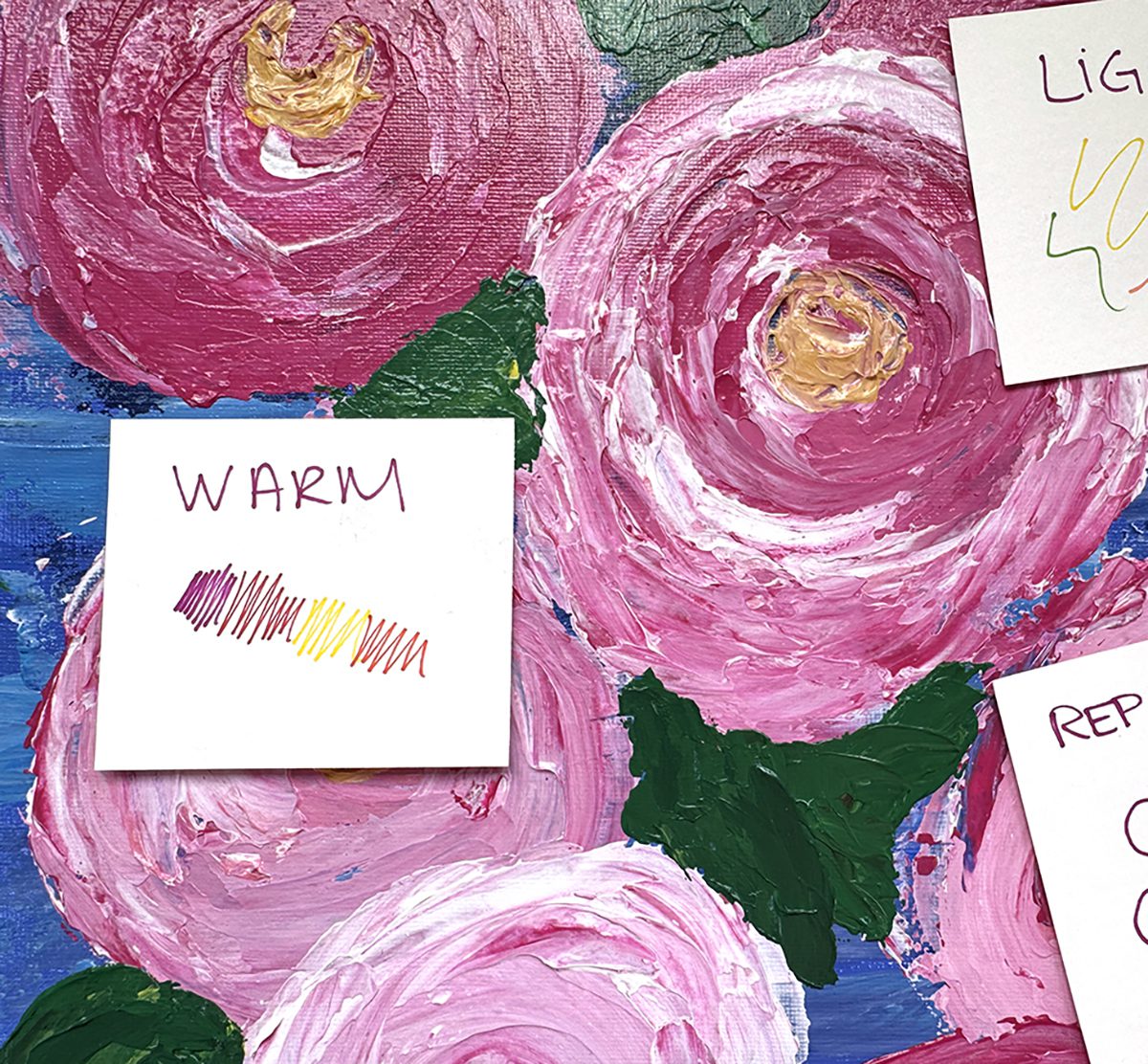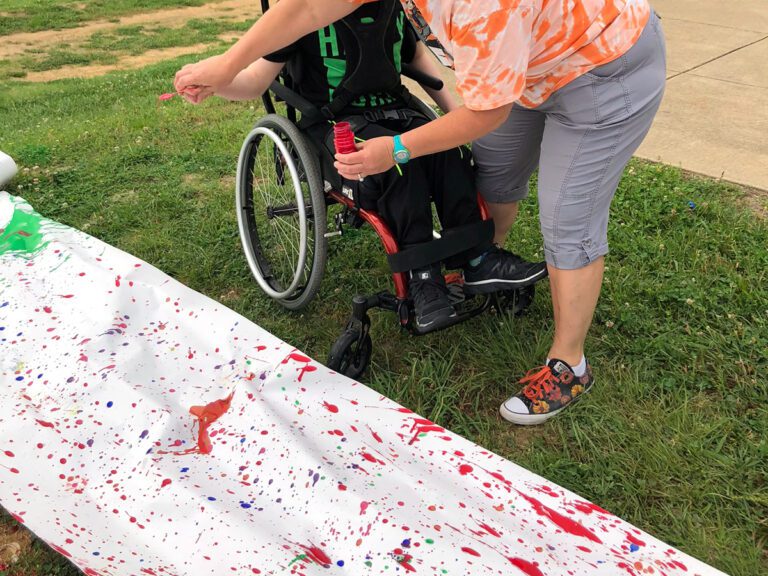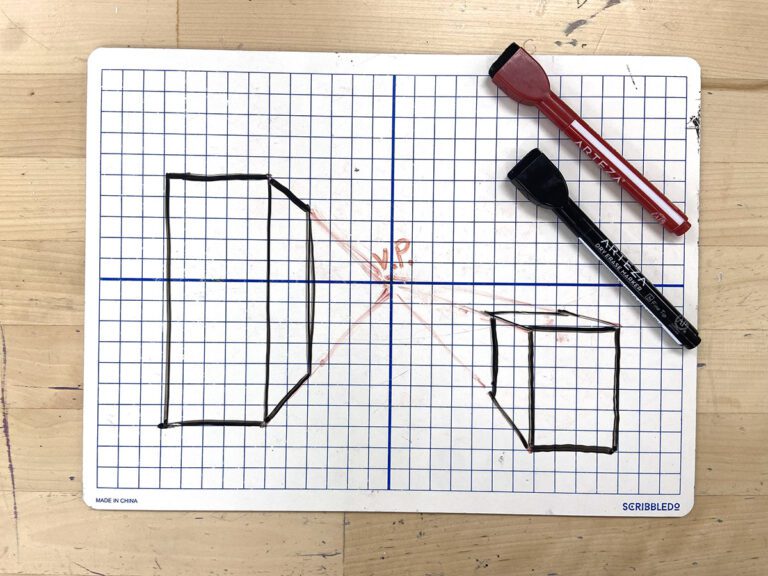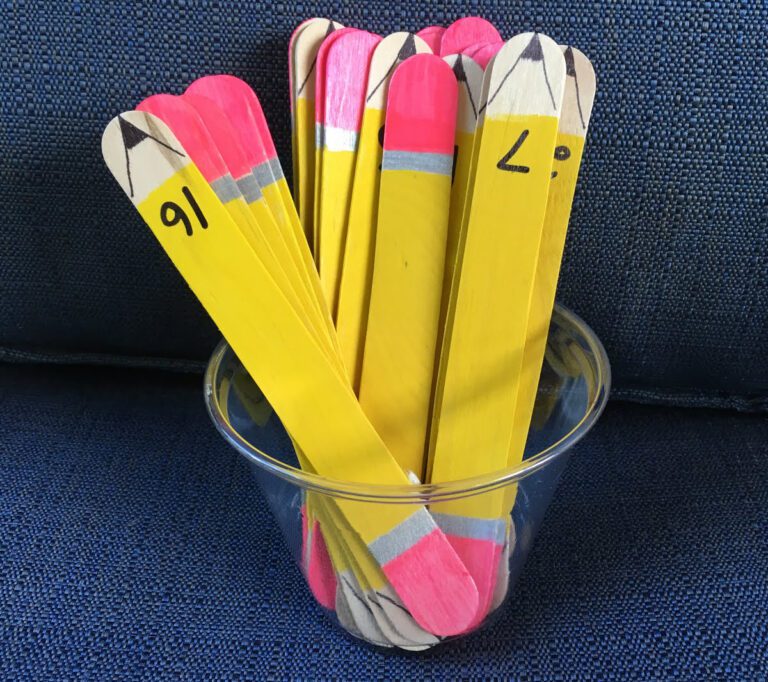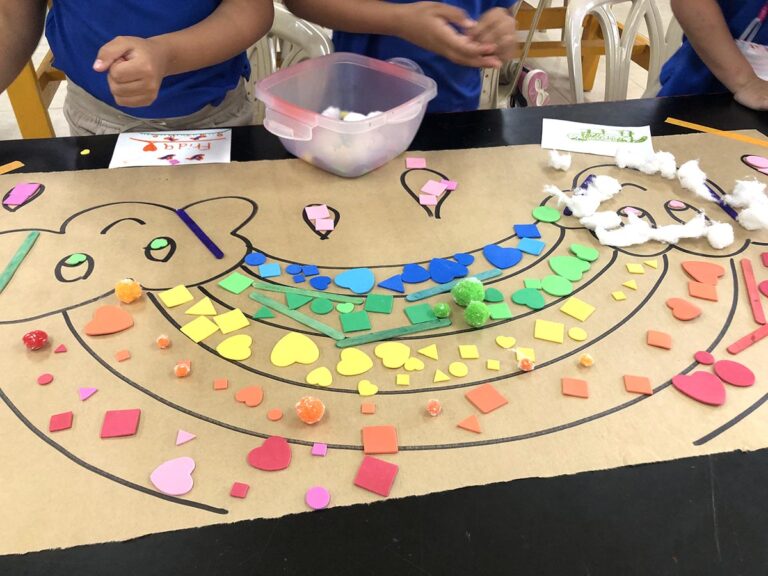Artist statements are a valuable part of the artmaking process; however, approaching them can be uncomfortable, especially when you have English Language Learners (ELL). Writing artist statements can be a challenge for any student, but for ELL students, the challenge is twofold: they must grasp both the content and the language. Having a class with varying literacy and language levels can be all the more reason to embrace writing artist statements on a regular basis! Incorporating more artist statements will build confidence, reinforce learning, and provide additional outlets for expression and communication.
Unlock WIDA levels to support ELL students, build language skills, and communicate complex ideas through powerful artist statements.
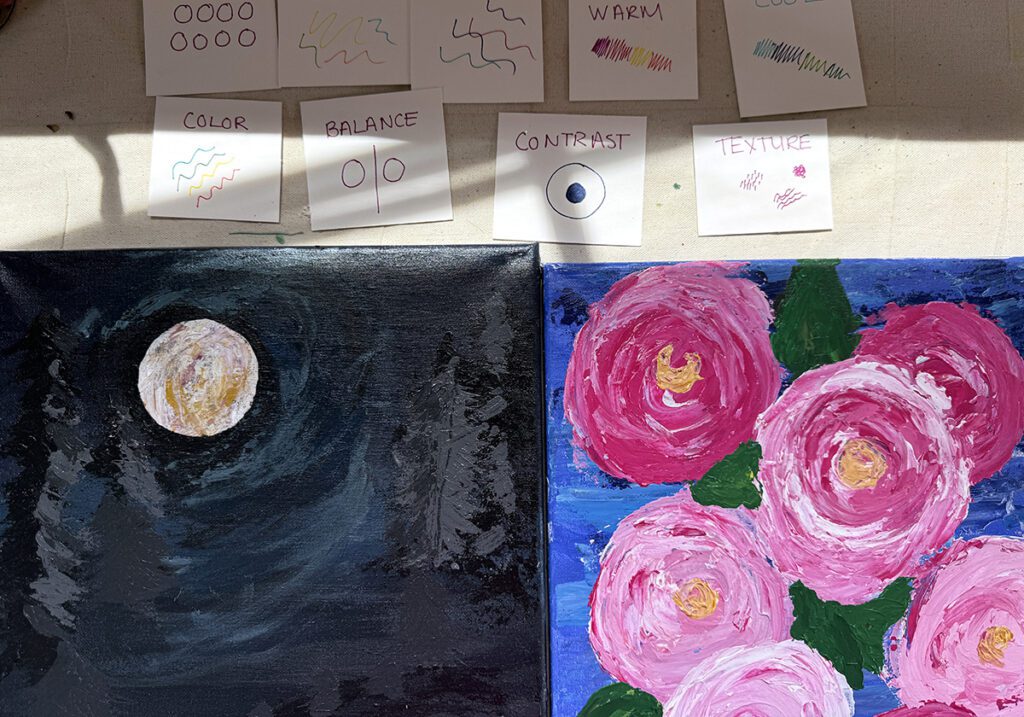
There are six categories of skill levels for English Language Learners. Educating yourself on the skills expected for each level can help you tailor your support for students when they read and write in your art room. WIDA is a consortium of state education departments that provide research-based tools and resources for K-12 multilingual learners. WIDA provides standardized frameworks so learning outcomes are consistent across adopting states, districts, and schools. Ask your administrator, mentor teacher, or professional counselor to show you where to access your students’ levels.
Understand the six levels below to unlock key strategies for helping your ELL students:
- Level 1: Entering
Students at this level are beginning to use English in very basic ways. They may understand and use a few common words and phrases. They often rely on visual aids and gestures for comprehension. Focus on building foundational vocabulary and simple sentence structures. - Level 2: Emerging
Students in this category are starting to form simple sentences and understand basic English. They still struggle with complex language structures and vocabulary. They can participate in conversations but may need additional support to grasp content. - Level 3: Developing
These students can create more complex sentences and understand basic English. They may still struggle with academic language and more abstract concepts. They can engage in discussions and express ideas, but they may make errors when it comes to more sophisticated language. - Level 4: Expanding
Students at this level demonstrate a good command of English and can use it in various contexts. They may still need support with specialized academic language and idiomatic expressions. They can engage in detailed discussions and write more complex texts. - Level 5/6: Bridging/Reaching
These students are nearly proficient in English. They can perform most tasks and understand most content in English. They may still need occasional support with very specialized or advanced language but can function effectively in an English-speaking environment.
Even if you don’t know the specific levels of each of your students, knowing different ways to scaffold reading and writing is helpful. Plus, it can be beneficial for all students—even those who know English but struggle with literacy. We’ll look at some prompts and activities below and break them down by level with examples.
Another helpful tip when assessing reading and writing is to remember what’s most important. Are you assessing reading and writing, such as pronunciation, grammar, spelling, and sentence structure? Or, are you assessing the art content they are trying to communicate, such as vocabulary terms, art materials, techniques, processes, and ideas? Prioritize your learning objectives and ensure they match your assessment outcomes.
Focus on these five areas with your ELL students to write artist statements with ease!
1. Home Language Expression
You are most comfortable when you’re in your own home—and so are your students! Make your classroom feel like their “home away from home” by allowing them to speak in their home language. This can be a great first step in writing an artist statement. Much like a “brain dump,” it provides a crucial foundation for processing and articulating their raw, honest thoughts. From here, students can take key information and incorporate it into their final statement, either in their home language or in English.
Prompt: I made…
- Level 1: Entering
Students use simple phrases or words in their home language. For example, they may say, “I made a house” in their home language while pointing to their drawing. - Level 2: Emerging
Students compose 1-2 basic sentences in their home language. They may share, “I made a tree because I like nature.” - Level 3: Developing
Students write a few basic sentences in their home language. For instance, “I made a painting of a sunset. I used bright colors to show how happy I feel when the sun sets.” - Level 4: Expanding
Students provide a short paragraph in their home language and emerging English. They may write, “I made different shades of blue and orange to represent the transition from day to night.” - Level 5/6: Bridging/Reaching
Students compare and contrast their artwork with other works in their home language and in English. They may share, “I made abstract shapes like Picasso but I used a different color palette of blue and orange.”
2. Vocabulary
Vocabulary acquisition is an important building block in forming and comprehending sentences. Just like with all of your students, it is your job to teach key art vocabulary, like the Elements and Principles. In addition, students will need to learn other art terms most students already know, such as pencil, scissors, fold, and sculpture. Introduce vocabulary and repeatedly reinforce it with a variety of visual aids.
Activity: Show me an example of…
- Level 1: Entering
Use labeled pictures with key vocabulary words, such as the colors yellow, orange, and red with the text “warm colors.” Students match a label to the correct corresponding spot on their artwork and practice saying the words aloud. - Level 2: Emerging
Provide cards with images, vocabulary words, and simple definitions. Students match cards to the correct corresponding spot on their artwork and practice reading the cards aloud. - Level 3: Developing
Introduce vocabulary with a word bank and encourage students to use them in sentences. For example, for Show me an example of warm colors, the student may write, “My clothes are warm colors to match the sun.”
- Level 4: Expanding
Continue to provide a word bank with more complex terms and descriptive language. They may write, “I used warm colors for my outfit to match the sun. It contrasts with the cool colors in the background. It helps me stand out!”
- Level 5/6: Bridging/Reaching
Students use advanced vocabulary and art terminology in their statements. For example, “I used warm colors on the subject matter to contrast with the cool, dark background. I wanted the person to stand out and look like they were running away from the background which is eerie and moody.”
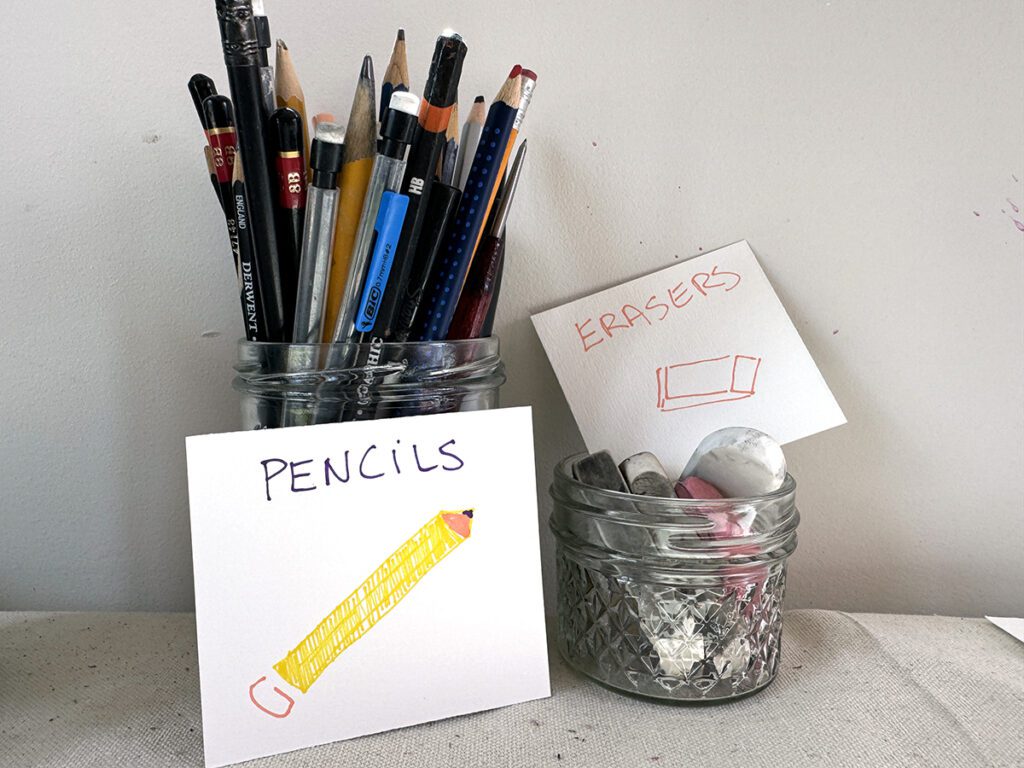
3. Sentence Structure
Take the bulk of the guesswork out of writing so students can focus on the content. Set up sentence stems and prompts so all students have to do is fill in the blank. These also help students organize their thoughts and provide immediate structure for final artist statements.
Activity: Pick a prompt and fill in the blank.
- Level 1: Entering
I drew a… or This is a… - Level 2: Emerging
I used… colors to show… - Level 3: Developing
The… in my artwork represents… because… - Level 4: Expanding
In my artwork, I used… materials to illustrate… or I used… technique to create…
- Level 5/6: Bridging/Reaching
In this piece, I used… technique because… and It supports my concept of… by…
4. Sharing & Labels
Sharing artwork is scary, especially in front of the whole class and especially when you aren’t confident with speaking the same language as everyone else. Build up to sharing in front of the whole class by starting small. Allow students to select their partner or assign partners based on who you see students comfortable with. Provide labels with key vocabulary words and blank sticky notes to support communication.
Activity: Select a partner and share your artwork with them using labels.
- Level 1: Entering
Students share their artwork with a partner using gestures and simple words. They can label their artwork with sticky notes that have pictures and basic words. - Level 2: Emerging
Students can share their artwork with a partner using short sentences. They label their work with sticky notes that include pictures, vocabulary words, and simple phrases. - Level 3: Developing
Students describe their artwork to a partner using complete sentences and labels. Encourage them to write a few sentences on sticky notes about specific elements of their work. - Level 4: Expanding
Students provide detailed explanations to their peers and use sticky notes to label their artwork with more complex terms and descriptions. - Level 5/6: Bridging/Reaching
Encourage students to engage in in-depth discussions about their artwork with peers, using sticky notes for detailed labels and explanations that reflect their advanced understanding.
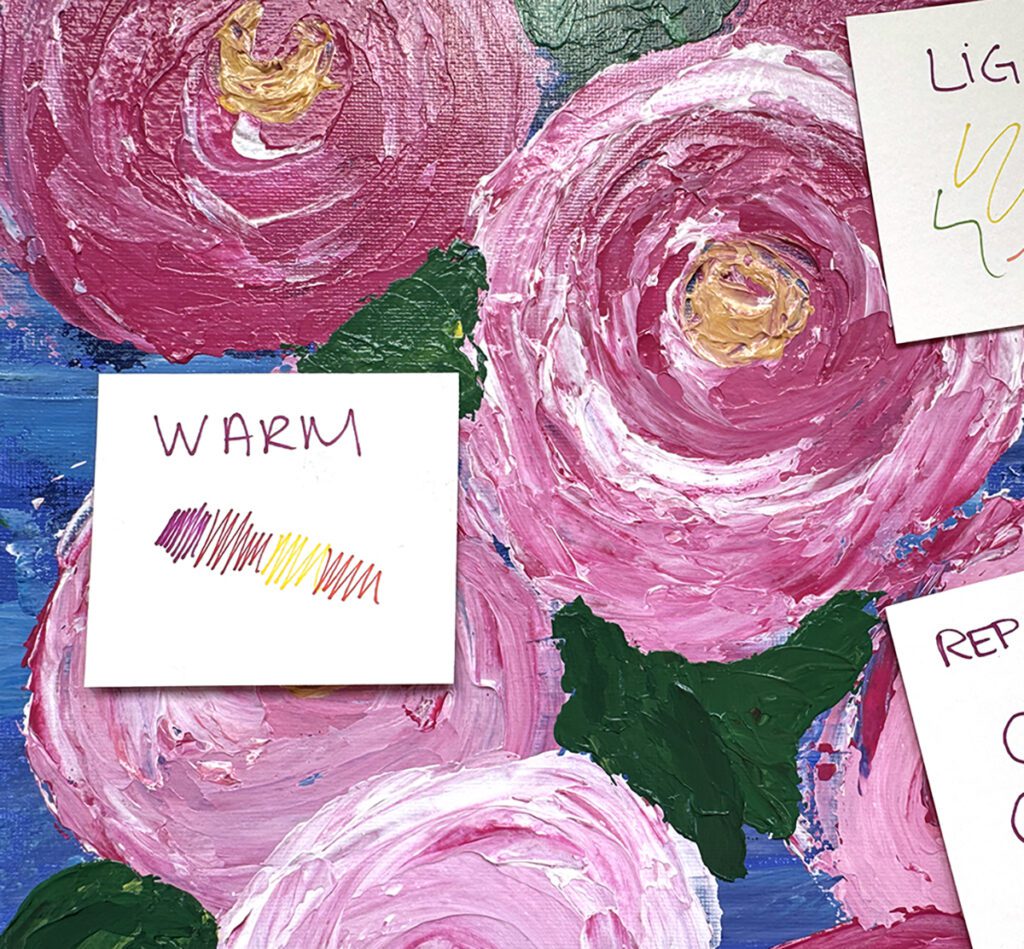
5. Scaffolding
You can also scaffold support by breaking down the artist statement structure. Take sections of the artist statement and do each of them together as a class or group. Within each of the five steps below, provide prompts based on each skill level for students to expand on. Feel free to tie in other previously mentioned tips, such as word banks, labels, and sticky notes, to maximize student success.
Activity: Write an artist statement step-by-step.
1. Identify the subject matter.
- Level 1: Students match images with words.
- Level 2: My art is…
- Level 3: My artwork is about…
- Level 4: My painting captures…
- Level 5/6: The… represents…
2. Describe the inspiration.
- Level 1: Students select and name picture cards that illustrate their sources of inspiration.
- Level 2: My idea is from…
- Level 3: I was inspired by…
- Level 4: The… inspired me because…
- Level 5/6: The… inspired me and it evokes…
3. Explain the meaning.
- Level 1: My art is about…
- Level 2: My art means…
- Level 3: The… in my artwork shows…
- Level 4: The use of… in my artwork symbolizes…
- Level 5/6: The… in this piece represents…
4. Discuss art techniques.
- Level 1: Students point to or name materials, techniques, or processes used.
- Level 2: I used…
- Level 3: I used… to make…
- Level 4: I used… to create…
- Level 5: The use of… emphasizes…
5. Reflect on the artistic process.
- Level 1: It was easy/hard to…
- Level 2: I learned…
- Level 3: It was hard to… but I learned…
- Level 4: When making my artwork, I struggled with… but I learned…
- Level 5/6: Through this process, I faced challenges such as… and successes such as…

Tackling reading and writing in the art room with English Language Learners doesn’t have to be scary for anyone! Use this toolkit of strategies and prompts to best support your students at any level of language acquisition. Understanding what to expect from each WIDA level will help you manage your expectations for learning so all students can succeed. Plus, having a repertoire of ways to break down the artist statement process will benefit all budding artists. Before you know it, students will feel safe and confident to discuss, read, and write about their artwork in no time!
Discover more resources to support your English Language Learners in the art room:
- How to Support ELL Students to Thrive in the Classroom
- 5 Strategies to Help Your English Langauge Learners
- Strategies to Help ELL Students (Ep. 234)
- What You Need to Know About ELLs in the Art Room
How do you support ELL students with writing artist statements?
What are some challenges you’ve faced when helping ELL students articulate their artistic ideas?
Magazine articles and podcasts are opinions of professional education contributors and do not necessarily represent the position of the Art of Education University (AOEU) or its academic offerings. Contributors use terms in the way they are most often talked about in the scope of their educational experiences.
